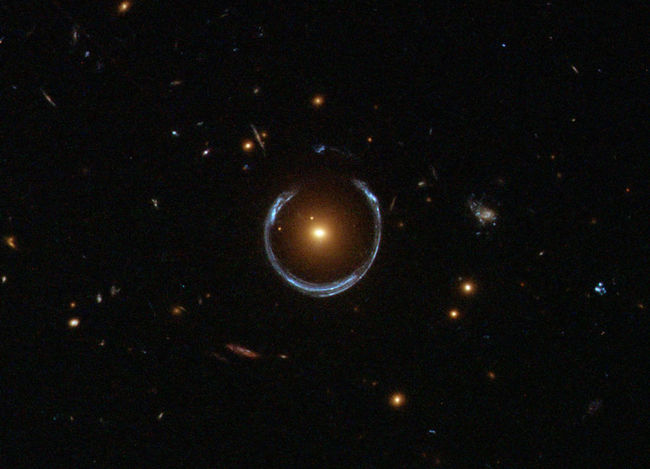General relativity
Contents
hideExplanation
General relativity is the theory of gravitation that is widely accepted as the modern description of gravity, after several experimentations. Albert Einstein developed this geometrical manifestation of gravity as a set of ten field equations upon his special relativity, which establishes the relationship between space and time. The general relativity theory explains that the gravity is not a force as proposed by Newton, but a geometrical consequence of an object's mass, curving the spacetime around it. For example, in our solar system, the mass of the sun curves the spacetime around it and as a result, the planets fall towards it. The reason why they don't actually end up falling into the sun is due to its high tangential velocity that forces them to miss their fall and orbit the sun instead. General relativity also predicts that gravity not only influences time but interacts with light by bending its path in a stronger field.
Frequently Asked Questions
How gravity affects photons if they are massless?
Gravity (presence of matter or energy) bends spacetime, which is obviously the path that light would travel. As the path itself is curved, light has to travel in that curved path caused by gravity.
How gravity influences time?
Consider two observers with identical light clocks (A clock that measures time by measuring the number of times the light bounces off the two parallel mirrors inside the clock), living in two different gravitational fields, one stronger and the other weaker. When an observer from the weaker gravitational field looks at the clock in the stronger gravitational field, that clock will be ticking at a slower rate than his own clock. On the other hand, for the observer in the stronger field, he will observe that the clock in the weaker gravitational field ticking faster than his. This phenomenon is known as gravitational time dilation. As gravity can affect the path of the light and curve it, the light clocks will tick at different rates in different gravitational fields. The clock at a weaker gravitational field will have a less curvature locally when compared to the curvature around the clock at a stronger gravitational field. Light always travels at the same speed. speed = distance/time. In the stronger gravitational field, the distance is increased due to the curvature, thereby increasing the time light would take to reach the mirror. When the observer at a weaker gravitational field observes this clock, it would appear that the clock is ticking slowly relative to his clock.
What is gravitational lensing?
Gravitational lensing is the phenomenon in which a massive cluster of objects bends the light that traverses around it, due to their intense gravitational field. This usually happens when observing a very distant source of light (e.g. a quasar) and a massive cluster of galaxies happens to be in between the source and the observer. The following image is a good example of this phenomenon.

